Cocktail Queries: A Guide to Kentucky Bourbon Distillery House Styles
Photos via Jim Beam, Maker's Mark, Four Roses, Brown-Forman, Wild Turkey, Barton 1792, Buffalo Trace, Heaven Hill Drink Features whiskey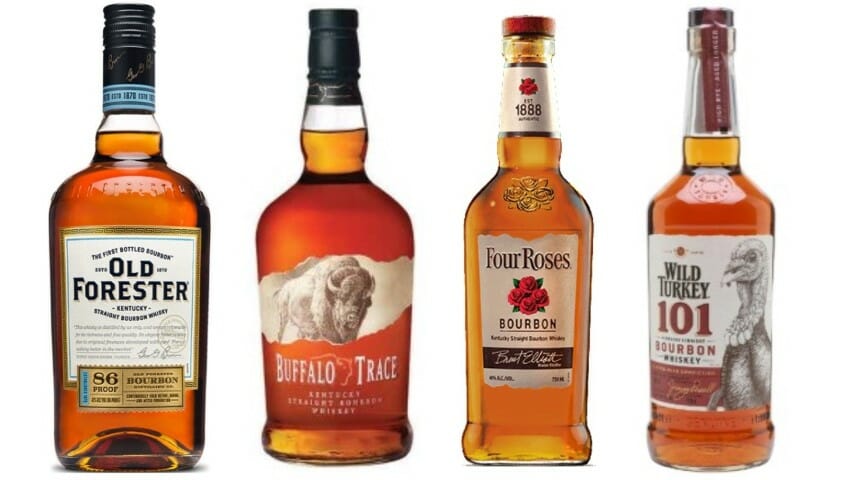
Cocktail Queries is a Paste series that examines and answers basic, common questions that drinkers may have about mixed drinks, cocktails and spirits. Check out every entry in the series to date.
In the world of spirits, as in the world of craft beer, the idea of drinker loyalty to a particular company or brand isn’t nearly the assumption that it was generations ago. Modern drinkers are a species that tends to seek novelty above all else, but I find that over time, whiskey drinkers in particular do seem to gravitate toward some of the classic old distilleries in particular. This tends to happen as a result of personal taste preferences, and how those preferences respond to each distillery’s overall house style.
The idea of a Kentucky bourbon distillery’s house style, though, is a nebulous one. Some distilleries, like Jim Beam, have a more concrete identity—their bourbons are easier to pick out of a blind tasting lineup than others, because they reliably taste a certain way that has its own distinctive flavors and aromas associated with the company. Other distilleries have less pronounced or definable house styles, or a style that is simply “well rounded,” without the sort of tells that might easily give them away when sampling blind.
Things are complicated, of course, by the fact that this is a decidedly subjective concept—your mileage is definitely going to vary, because your palate is unique to you. Even tasting with a specific note in mind, you simply may not pick up specific flavors that others describe as being prominent. Your palate may also uncover flavors that few others recognize—this is the joy of tasting, because no one can really tell you that you’re wrong.
Consider the below, then, to be a very basic guide to some of the most prominently noted flavors and aromas present in the core lineups of eight of the most prominent Kentucky bourbon distilleries. New tasters: There’s no substitute for trying all of these whiskeys for yourself, but if you know that you prefer a certain flavor profile, you may be able to use this guide to point yourself in the direction of what you want to sample next.
Note: For simplicity, we’re focusing exclusively on bourbon here, rather than rye or wheat whiskey.
Jim Beam
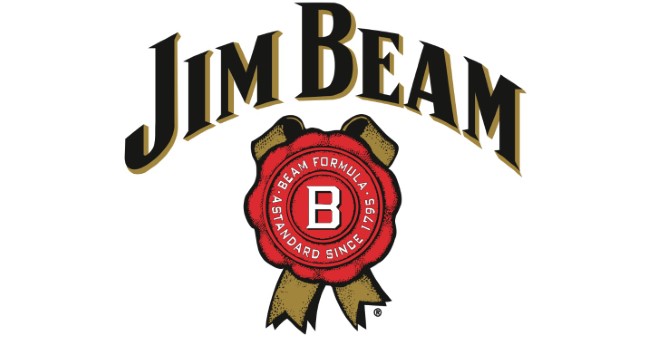
Beam Suntory is a massive company, containing bourbon brands that range from the obvious (Jim Beam), to the likes of Old Grand-Dad, Old Crow, Baker’s, Basil Hayden’s, Booker’s and Knob Creek. Beam Suntory also owns Maker’s Mark, but they operate more or less independently with their own aesthetic and house style, so we’ll include them separately on this list.
Beam’s bourbons tend to fall into one of two mash bills; one with a lower rye content and one that is higher. The “low rye” Beam recipe is very standard for the industry, and is much copied: 75% corn, 13% rye, 12% malted barley. This low-rye mashbill includes the Jim Beam line, as well as Old Crow, Knob Creek, Baker’s and Booker’s. The “high-rye” mashbill, on the other hand, is 63% corn, 27% rye and 10% malted barley, and includes the brands Old Grand-Dad and Basil Hayden’s. It’s the significantly rarer of the two mash bills.
Bourbons from Beam’s low-rye mash bill tend to be fairly distinctive, especially when young, for their pronounced nutty aromas and mustier corn characteristics. This nuttiness, described by some bourbon geeks as “peanut shell funk,” leaps out of the glass on very young Beam bourbons such as Old Crow in particular, and if you’re sensitive to that note it can make a glass of Old Crow smell like a jar of peanut butter. These same notes tend to be present in most younger Beam bourbons (four years or less), but age and proof bring more balance to this Beam profile. This is clearly illustrated by the Knob Creek lineup in particular, where the 9 and 12-year-old expressions of the same mash bill, and the added proof, rein in the nuttiness and support it with more caramelized sugars, oak and fruitiness. At high proofs, as in the Knob Creek single barrel program (120 proof) or Booker’s (cask strength), additional notes like maple syrup, dark fruit jam and tobacco-like earthiness also often emerge.
Bourbons made with the high-rye Beam mash bill, by comparison, are similar in many ways, but have a more prominent dusty rye grain note, and often more of a citrusy profile.
Brown-Forman
Brown-Forman is the producer of the world’s biggest American whiskey brand (Jack Daniels), which isn’t technically bourbon but rather Tennessee whiskey. At the same time, though, Brown-Forman also produces both Old Forester and Woodford Reserve, sister brands of a sort that have many similarities, but are separated by the intricacies of distillation and aging methods.
Both Old Forester and Woodford Reserve (and Cooper’s Craft) share a single bourbon mashbill: 72% corn, 18% rye, 10% malted barley. They’re quite serious about exploring the length and breadth of that mash bill, with numerous Old Forester and Woodford Reserve brands that seek to tease all the nuances out of it through differences in age, proof and methods of maturation.
Perhaps as a result, Brown-Forman bourbons have an odd quality of often falling into one of several “camps,” at least to my palate, each of which is quite distinct. Famously, they’re known for bourbons that often have a prominent banana/flambe note—a roasted plantain/banana candy kind of thing that can be very distinctive when you pick it up. However, that banana note isn’t always particularly present from brand to brand, or even batch to batch. Another prominent Brown-Forman note is cherry fruitiness, sometimes supported by chocolate, which in well-aged bourbons can give a definite “cherry cordial” vibe. Still other Brown-Forman bourbons from the same mash bill lean into more of a spice-driven dimension, with prominent rye flavors and more oak.
All of these flavors are possible within Old Forester and Woodford Reserve brands, which can make opening these bottles something of a roll of the dice. Well-regarded bottles such as Old Forester 1920 Prohibition Style, however, often function as a good synthesis of multiple aspects of the house style—a little from column A, a little from column B.
Buffalo Trace
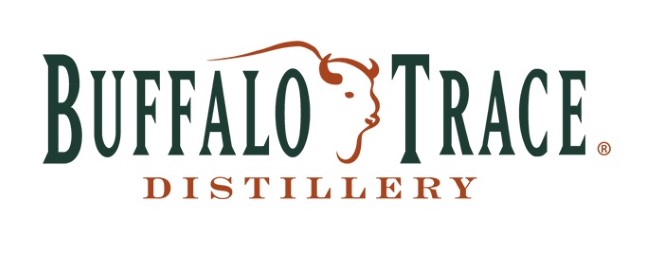
Like so many other things about Buffalo Trace, the mash bills here are a bit more of a mystery, but in general the bourbons produced at Buffalo Trace are separated into three major mash bills: Lower rye, higher rye, and wheated bourbon.
Exact percentages for any of the three mash bills are not disclosed, but the lower rye “#1” mash bill is said to consist of less than 10% rye, and it includes many of the core brands: Buffalo Trace, Benchmark, Old Charter, E.H. Taylor, Eagle Rare, Stagg Jr. and George T. Stagg. These bourbons are often said to possess what many drinkers think of as “classic bourbon” flavors, with an emphasis on caramel, vanilla, sweetness and cherry-like fruit. Obviously, these flavors mature and change from a bottom shelf brand like Benchmark to a sought-after whale such as George T. Stagg, but it’s arguably less dramatic a change than in other bourbon house styles, and more of a subtle evolution as age and proof increases.
The “#2” mash bill is slightly higher in rye, at what is often reported as 12-15%, and it includes several brands that BT produces for other companies, such as Ancient Age, Blanton’s, Rock Hill Farms and Hancock’s Reserve, as well as their own Elmer T. Lee. The flavors here are typically described as having a more subtly spicy quality, and I often find them to possess a delicate red berry fruitiness (strawberry, sometimes) that is complemented by vanilla and notable sweetness.
The wheated Buffalo Trace mash bill, meanwhile, is the source of some of the most highly sought-after and hyped bourbons in the world today, including W.L. Weller, William Larue Weller and Pappy Van Winkle. This mash bill simply swaps the rye of the #2 mash bill for wheat, and in the process creates a lineup of products that have often fallen victim to extreme price gouging in recent years. They are typically described as soft and sweet, redolent in notes of caramel and butterscotch, honeysuckle and florals, as is more common in wheated bourbons.
Four Roses

Four Roses is unique among the major Kentucky distilleries for its intense focus on blending 10 different recipes, but that doesn’t mean they don’t have a house style. Far from it, in fact—Four Roses uses its blending methods to key in specific profiles for each of its major brands that all exist on a spectrum of distinctly “Four Roses” flavor. The fact that they don’t produce anything other than bourbon also speaks to how singular a profile they’ve created.
The 10 Four Roses recipes are the result of two separate high-rye mash bills (“B” is 35% rye, while “E” is 20%) and five different yeast strains: V, K, O, Q and F. Each of these yeast strains has its own signature flavors, from the “rich fruit” of O, to the spice of K or the florals of Q. Four Roses then builds various bourbon brands by blending these 10 recipes in a variety of ways, but all Four Roses blends have at least a similar backbone.
Four Roses’ house style obviously favors the spicy flavors of rye, but unlike some high-rye bourbons that are on the drier side, Four Roses style also favors sweetness and fruit impressions. Depending on the brand, various Four Roses products can push themselves into more floral or herbal directions, while the flagship Four Roses Bourbon contains all 10 recipes, balancing itself between sweetness, rye spice and fruitier flavors. Of note: The Four Roses Small Batch leans toward richer fruit notes, and is known for being gentle and sweet on the palate, where the more recently introduced Small Batch Select features the less common “F” yeast strain to provide a more intensely herbaceous profile. Individual store picks of single barrels can likewise provide much more unique profiles, as they are drawn from only one recipe.
If this description has sounded at all familiar to drinkers of Bulleit Bourbon, by the way, that’s no coincidence—Bulleit’s stock has largely been sourced from Four Roses, so Bulleit has had a similar house style in the last few decades. Bulleit is currently distilling its own product, but that bourbon hasn’t yet come of age, so we don’t know how similar it will be to Four Roses when it’s finally released.
Heaven Hill
Heaven Hill are the producers of numerous bourbon brands, but almost all of them fall under two mash bills: A standard bourbon mash bill, and a wheated bourbon alternative. The standard mash bill is 78% corn, 10% rye and 12% malted barley, including such brands as Heaven Hill Bourbon, Evan Williams, J.W. Dant, Elijah Craig, Henry McKenna and Parker’s Heritage. The wheated bourbon mash bill, meanwhile, includes the Larceny and Old Fitzgerald brands, and is 68% corn, 20% wheat and 12% malted barley.
The first thing one might notice, tasting younger Heaven Hill bourbons such as Evan Williams, is that they bear some resemblance to the house flavor profile of Jim Beam—like Beam, Heaven Hill’s younger bourbons are sometimes described as having that specific, distinctive “honey roasted peanut” nuttiness to them. This is no coincidence, as Heaven Hill was in fact founded by a scion of the Beam family, and indeed the master distiller of the company’s last name was “Beam” through numerous generations all the way up until 2019. The two distilleries clearly share some of the same foundational DNA, although Heaven Hill is obviously very much its own entity. In their youngest bourbons, though, the similarities are most closely felt.
Older Heaven Hill bourbons include many of the brand’s most sought-after expressions, including Henry McKenna 10 Year Bottled-in-Bond and the 12-year-old Elijah Craig Barrel Proof. These bourbons provide excellent balance and are very close to “center of the bullseye” for a Kentucky bourbon definition, tending to deftly balance assertive impressions of oak, caramel, vanilla and spice. You might consider them to be less “fruity” in general than the likes of Four Roses or Brown-Forman.
The wheated bourbon mash bill at Heaven Hill, meanwhile, is entirely unlike anything you might compare it to at Beam—the more obvious comparison is Maker’s Mark or Buffalo Trace’s wheated bourbon mash bill, but the Heaven Hill examples are fairly distinct. These wheated bourbons tend to have a graininess that turns to red fruit sweetness and maple richness as they age, sometimes also having strong impressions of cocoa or toasted marshmallow. The extra-aged Old Fitzgerald brand is obviously more oak-inflected, while the stronger Larceny Barrel Proof packs more of a fiery wallop.
Barton 1792
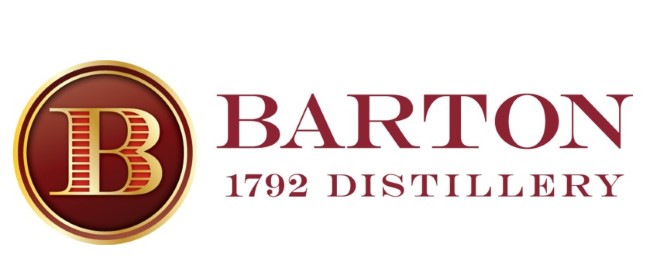
The Barton 1792 Distillery sometimes gets labeled as the “forgotten” member of the bigger Kentucky whiskey distilleries, but to see the way bottles of 1792 disappear off the shelves in my home state of Virginia, they definitely have a rabid fanbase of their own. Their bourbons are all primarily made (as far as I can tell) from a single mash bill that registers at 74% corn, 18% rye and 8% malted barley. A bit more rye than the likes of Beam or Heaven Hill, therefore, but not so much as say, Four Roses. Their products with this mash bill include Very Old Barton and the eponymous 1792 range of whiskeys.
Nailing down the Barton 1792 house style is a bit trickier, as the 1792 line in particular has many line extensions (such as small batch, single barrel and bottled-in-bond) that drink a bit differently from one another, but it’s usually safe to say that Barton bourbons provide a good balanced between fruit and caramelized sugar impressions. Cherry, apple and citrus are commonly cited, while you also can expect some caramel and touches of rye spice. All of these elements were present in Very Old Barton in particular when it won our blind tasting of 13 bourbons with price tags under $15.
All in all, you could best characterize the Barton 1792 house style as balanced but trending toward the sweeter side of the spectrum, with some fruity flourishes.
Maker’s Mark
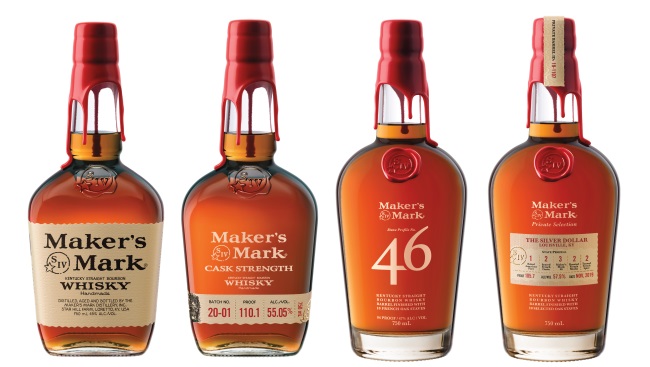
The big difference between Maker’s Mark and all the other prominent Kentucky bourbon distilleries is of course the fact that Maker’s Mark produces only wheated bourbon—ain’t no rye in this facility at all, as far as I know. As such, they have only a single mash bill, which is 70% corn, 16% wheat and 14% malted barley. Note that if the percentage of wheat was more than 50%, the whiskey would qualify as “wheat whiskey” rather than bourbon, but Maker’s doesn’t produce any full-on wheat whiskey. This is exclusively a wheated bourbon house.
Wheated bourbons in general have a tendency to read as more syrupy in texture than bourbons made with rye, with less peppery spice and more corresponding “doughiness” and often a greater impression of sweetness. This is all true of Maker’s Mark, which has long been a popular entry point into bourbon for those looking for an agreeable, gentle dram. Flavor notes associated with the Maker’s Mark lineup often include toffee, caramel, vanilla and honey, along with citrus and light spice.
An exception is the Maker’s 46 series and bottles in the Maker’s Private Selection series, all of which see a secondary maturation with specially toasted or roasted oak staves in order to reenergize the aging process. Depending on which oak staves are used in any given barrel of Private Selection, for instance, the resulting bourbon can push itself in a more roasty, spicy or rich direction. Core expressions of Maker’s Mark, though, such as the eponymous bourbon and its cask strength version, are usually noted for their sweet notes of caramel, vanilla and light oak.
Wild Turkey
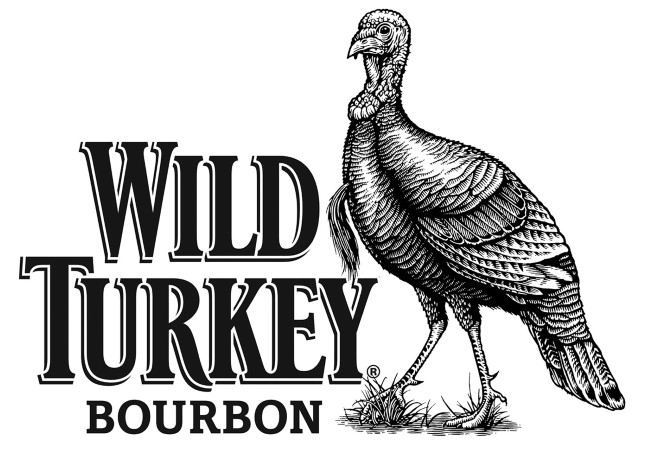
Of course, the list wouldn’t be complete without the iconoclasts over at Wild Turkey. For decades, they’ve been throwing exceptionally flavorful, bombastic bourbon out into the world, and often at great values. Primarily, all of these bourbons share a single mash bill that is pretty standard, at 75% corn, 13% rye and 12% malted barley. This mash bill is spread out over an impressive array of brands—some bearing the Wild Turkey name directly, and others slightly less obviously such as Russell’s Reserve, named for the master distiller team of father Jimmy and son Eddie Russell.
Wild Turkey is a wild card among the flavor profiles/house styles of the prominent Kentucky bourbon distilleries, and a bit harder to pin down with specifics that all the brands share. Certainly, there’s an expected dose of caramel and vanilla in pretty much any Wild Turkey bourbon, but they also often run in spicier and more savory dimensions. Baking spices such as cinnamon and clove are frequent tasting notes, and more herbaceous notes of tobacco or charred oak are frequent as well. Chocolate, nuts and citrus may all make appearances as well, leading to bourbons that are often multi-layered and nuanced, even after dilution.
Despite the average rye content, it also seems like Wild Turkey bourbons have a tendency to feature the grain prominently in their flavor profiles. In fact, you might consider the difference in profiles between Wild Turkey and Jim Beam—with the exact same mash bill—indicative of just how many other factors ultimately shape the flavor of a bourbon, from yeast and distillation techniques to age and warehouse design. Wild Turkey has always avowedly been its own thing, and so shall it no doubt remain.
Jim Vorel is a Paste staff writer and resident liquor geek. You can follow him on Twitter for more drink writing.
